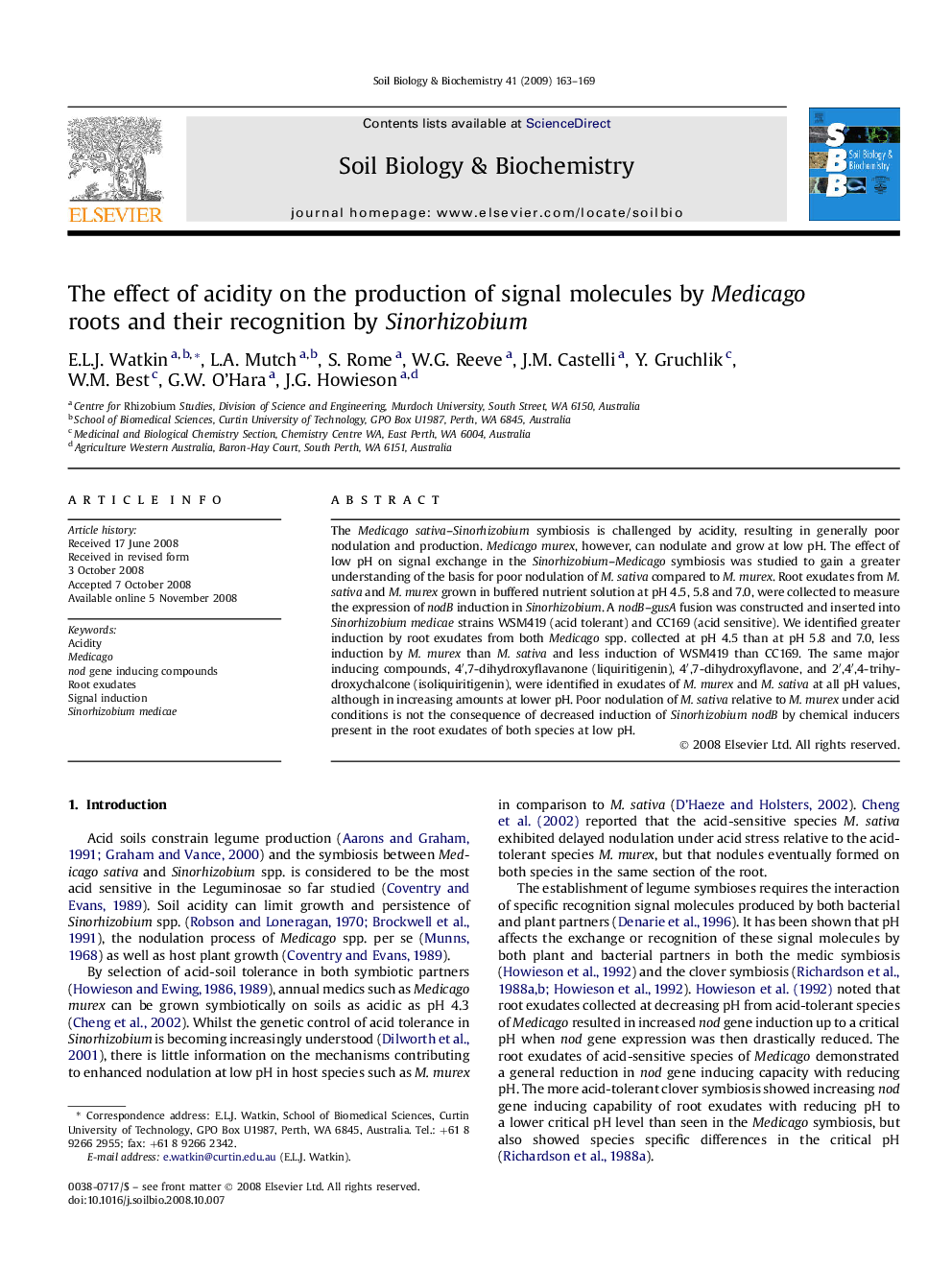| Article ID | Journal | Published Year | Pages | File Type |
|---|---|---|---|---|
| 2026821 | Soil Biology and Biochemistry | 2009 | 7 Pages |
The Medicago sativa–Sinorhizobium symbiosis is challenged by acidity, resulting in generally poor nodulation and production. Medicago murex, however, can nodulate and grow at low pH. The effect of low pH on signal exchange in the Sinorhizobium–Medicago symbiosis was studied to gain a greater understanding of the basis for poor nodulation of M. sativa compared to M. murex. Root exudates from M. sativa and M. murex grown in buffered nutrient solution at pH 4.5, 5.8 and 7.0, were collected to measure the expression of nodB induction in Sinorhizobium. A nodB–gusA fusion was constructed and inserted into Sinorhizobium medicae strains WSM419 (acid tolerant) and CC169 (acid sensitive). We identified greater induction by root exudates from both Medicago spp. collected at pH 4.5 than at pH 5.8 and 7.0, less induction by M. murex than M. sativa and less induction of WSM419 than CC169. The same major inducing compounds, 4′,7-dihydroxyflavanone (liquiritigenin), 4′,7-dihydroxyflavone, and 2′,4′,4-trihydroxychalcone (isoliquiritigenin), were identified in exudates of M. murex and M. sativa at all pH values, although in increasing amounts at lower pH. Poor nodulation of M. sativa relative to M. murex under acid conditions is not the consequence of decreased induction of Sinorhizobium nodB by chemical inducers present in the root exudates of both species at low pH.
